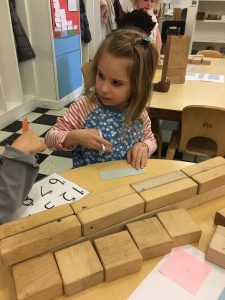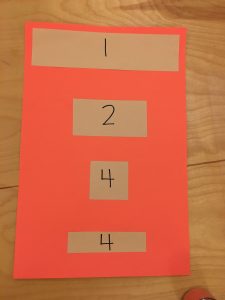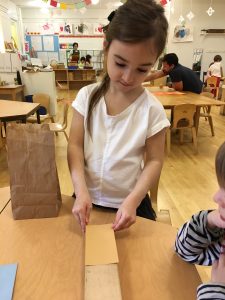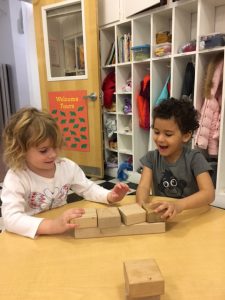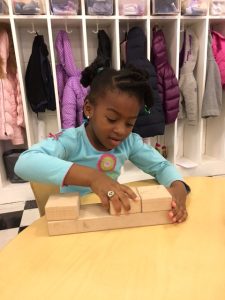What can a student in the fours do when they run out of a certain sized block?
They can use the “recipe” or conversion chart they made to create the block size they need from other blocks.
Students in Pre-K used classroom blocks to estimate, and then test, how many of each of the same size smaller blocks it would take to cover one double unit block. The class worked in pairs on this investigation, and then the class created posters of their mathematical conversions. They have found this conversion chart, or “recipe” useful to refer to when they run out of a certain block size because they can now create the size they need by combining (composing) other blocks.
In the chart above, the “Double Unit” block is shown on top, and the number of other blocks needed to create the double unit block are shown below.
Where’s the Math?
In the process of this investigation, the fours were exploring composing and decomposing geometric shapes, fractional parts of shapes, area, as well as measurement iteration (how many of the same unit laid end-to-end would equal the same length).
Here are some targeted questions teachers asked students in order to differentiate this activity:
- “Can you predict how many of this shape (unit square) it will take to cover the double unit block?”
- “If it takes two unit squares to cover half the double unit block, how many more unit squares would it take to cover the whole double unit block?”
- “If you only had two unit blocks to cover the double unit block, is there a way you could use them to find out how many more you might need?”
